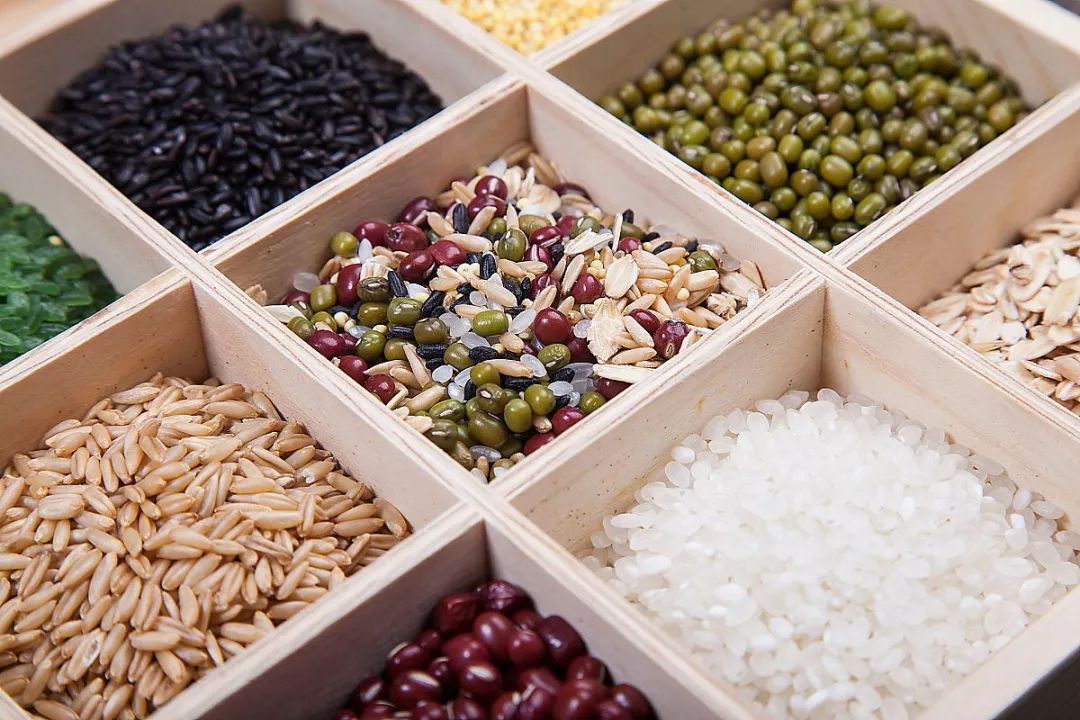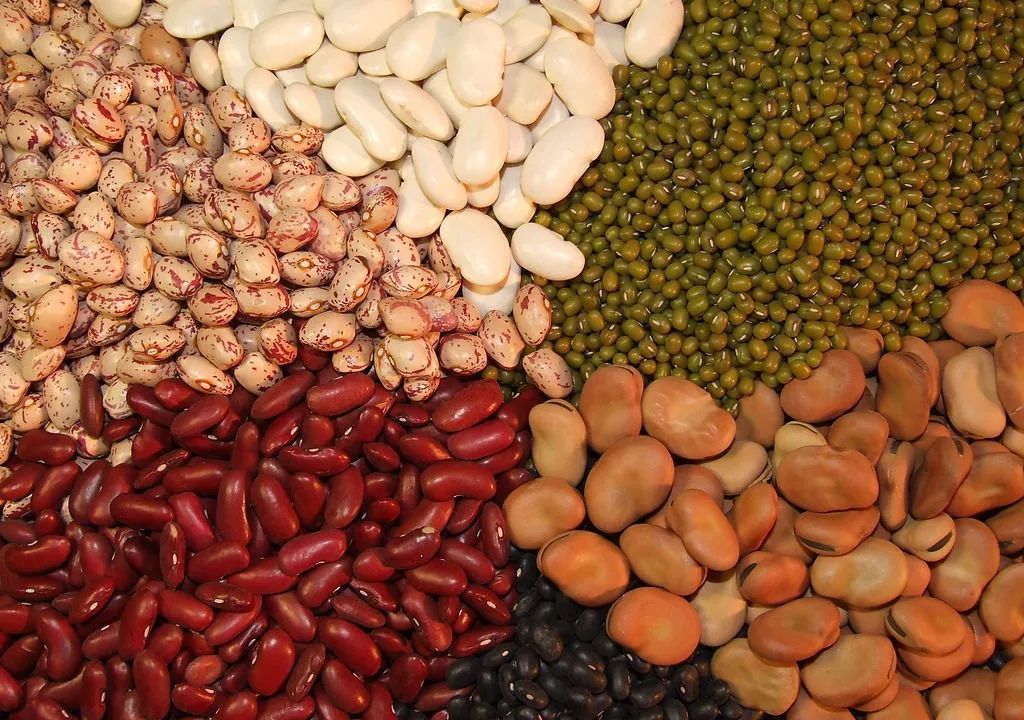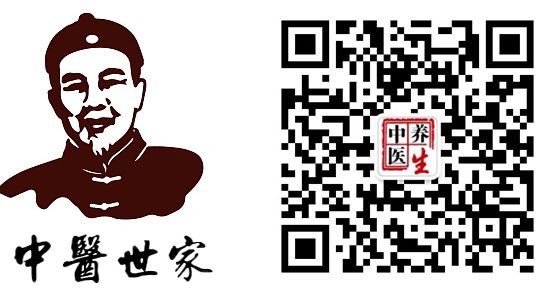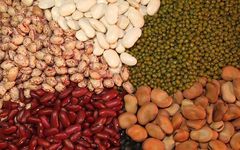
Many retirees are aware that consuming refined flour for a long time is not good for the body, which is why more and more people are turning to whole grains. In Traditional Chinese Medicine (TCM), there is a saying that “the five grains nourish the five organs”. Do you know which five grains nourish which organs? How should we eat them for better health? Let’s find out!
The Five Grains Nourish the Five Organs
Due to regional differences, there are many interpretations of the five grains, but rice (dà mǐ), millet (gāo liáng), foxtail millet (sù), wheat (mài), and soybeans (shū) are the most common on the dining tables of the people.
Wheat Nourishes the Heart

Wheat is sown in autumn, nurtured in winter, grows leaves in spring, and bears fruit in summer, absorbing the essence of the four seasons, thus it is called “the noble grain”. TCM believes it can nourish the heart, calm the spirit, and alleviate irritability.
 Correct Eating Method
Correct Eating Method
• Use whole wheat with the bran to make porridge, which helps to eliminate irritability;
• For menopausal women experiencing excessive sweating, they can buy some floating wheat (fú xiǎo mài) from a Chinese medicine shop to brew and drink, which can nourish the heart and stop sweating.
Sorghum Nourishes the Liver

Sorghum is a type of coarse grain and plays an indispensable role among the five grains, having the effects of nourishing the liver, benefiting the stomach, and stopping diarrhea.
 Correct Eating Method
Correct Eating Method
Process sorghum into flour, then stir-fry it until cooked, and mix it with warm water to form a paste for consumption. Those with chronic diarrhea can continue to eat it for a period of time.
Millet Nourishes the Spleen

Millet is the top of the five grains and has a great effect on tonifying the spleen and stomach. To nourish the five organs well, one must first nourish the spleen and stomach, so millet is an excellent choice for those with weak bodies, as it can tonify the middle, boost energy, and promote longevity.
 Correct Eating Method
Correct Eating Method
The best way to eat millet is to make porridge. If you add yam (shān yào) while cooking, the nourishing effect will be even better; yam also has the effect of strengthening the spleen and stomach, stimulating gastrointestinal peristalsis, and promoting the expulsion of intestinal contents. Together with millet, it can nourish while promoting digestion and preventing constipation.
Rice Moistens the Lungs

Rice is white in color and enters the lung, spleen, and stomach meridians, having the effects of nourishing yin, moistening the lungs, benefiting qi, and nourishing the stomach.
 Correct Eating Method
Correct Eating Method
To achieve the lung-moistening effect, rice is best used to make porridge. Additionally, adding white foods like tremella (yín ěr) and lily bulbs (bái hé) while cooking will enhance the moistening effect. Regular consumption can clear heat, moisten the lungs, nourish yin, and generate fluids.
Black Beans Nourish the Kidneys

Black beans are known as the grain of the kidneys. TCM believes they have the effects of nourishing yin, tonifying the kidneys, and enhancing beauty, making them particularly suitable for those with kidney deficiency.
 Correct Eating Method
Correct Eating Method
Black beans can be used to make soup, porridge, or ground into soy milk. Those who often experience soreness in the lower back and knees can regularly drink black bean oxtail soup. Additionally, adding some eucommia (dù zhòng) to the soup can enhance the effects of tonifying the liver and kidneys and strengthening the tendons and bones.
A table summarizing the effects of common grains!
|
Index |
Name |
Effects |
|
1 |
Rice |
Tonifies the spleen, harmonizes the stomach, clears the lungs. |
|
2 |
Millet |
Benefits the kidneys and stomach, clears heat, tonifies deficiency, calms the mind, and strengthens the stomach. |
|
3 |
Purple Rice |
Nourishes yin, tonifies the kidneys, strengthens the spleen, brightens the eyes, invigorates blood. |
|
4 |
Black Rice |
Stimulates appetite, brightens the eyes, invigorates blood, and tonifies essence. |
|
5 |
Job’s Tears |
Strengthens the spleen and stomach, reduces edema, alleviates rheumatism, and clears lung heat. |
|
6 |
Glutinous Rice |
Assists digestion, calms the mind, alleviates fatigue and dizziness. |
|
7 |
Brown Rice |
Assists digestion, cleanses the intestines, improves rough skin, and prevents beriberi. |
|
8 |
Corn |
Aids in weight loss and reduces fat. |
|
9 |
Sorghum |
Alleviates diarrhea, promotes urination, strengthens the spleen, tonifies qi, and clears the stomach. |
|
10 |
Soybeans |
Strengthens the spleen, moistens dryness, clears heat, improves iron deficiency anemia, and alleviates neurasthenia. |
|
11 |
Adzuki Beans |
Strengthens the spleen, alleviates summer heat, and transforms dampness. |
|
12 |
Red Beans |
Promotes urination, reduces swelling, strengthens the spleen and stomach, and nourishes the heart. |
|
13 |
Green Beans |
Clears heat, detoxifies, alleviates summer heat, and reduces fire. |
|
14 |
Black Beans |
Clears heat, nourishes blood, tonifies the kidneys, and alleviates deficiency, promoting black hair. |
|
15 |
Sweet Potatoes |
Moistens the intestines, promotes bowel movements, strengthens the stomach, and boosts energy. |
|
16 |
Potatoes |
Harmonizes the stomach, tonifies qi, strengthens the spleen, benefits the kidneys, reduces inflammation, invigorates blood, and reduces swelling. |
|
17 |
Wheat |
Nourishes the heart, calms the spirit, benefits the kidneys, and strengthens the spleen. |
|
18 |
Oats |
Enhances beauty, slows aging, and aids in weight loss. |
|
19 |
Buckwheat |
Boosts energy, stimulates appetite, promotes bowel movements, and clears heat and detoxifies. |
|
20 |
Barley |
Detoxifies heat, tonifies qi, aids digestion, stops diarrhea, and cools the blood. |
While coarse grains are beneficial,
there are some people who should avoid them
Individuals with Poor Gastrointestinal Function
This group has relatively weak digestive functions, and consuming too many coarse grains can burden the gastrointestinal tract. Especially for the elderly, daily intake of coarse grains should be limited to below 100g.
Individuals Needing Nutritional Supplementation
For example, the elderly, adolescents in developmental stages, and those who are bedridden for long periods. This group has a higher demand for nutrients and energy, while coarse grains are low in nutrient and protein content, and can hinder cholesterol conversion and the absorption and utilization of other nutrients. Additionally, excessive fiber in coarse grains can obstruct protein supplementation and reduce fat utilization, making them unsuitable for this group.
Individuals with Iron, Calcium Deficiency, or Anemia
Coarse grains contain phytic acid and plant fibers, which can bind with minerals and form precipitates, hindering the absorption of iron. Therefore, elderly individuals with osteoporosis should avoid excessive consumption of coarse grains.
Gout Patients
Some coarse grain foods contain oxalic acid, which can trigger symptoms. For example, legumes, even in small amounts, can lead to increased uric acid levels, causing gout or even complications.

Special Reminder
Commonly found “five grain flour” in supermarkets can be easily mixed with hot water to make a paste, which is simple and convenient.
 For those with normal blood sugar but poor digestion, choosing mixed grain paste to replace part of refined rice or flour as a staple food for nutritional supplementation is acceptable.
For those with normal blood sugar but poor digestion, choosing mixed grain paste to replace part of refined rice or flour as a staple food for nutritional supplementation is acceptable.
 For diabetic patients, if they choose coarse grain foods, it is best to use mixed grain rice or whole grain porridge (must contain a higher proportion of oats or mixed beans) instead of using mixed grain flour to replace staple foods.
For diabetic patients, if they choose coarse grain foods, it is best to use mixed grain rice or whole grain porridge (must contain a higher proportion of oats or mixed beans) instead of using mixed grain flour to replace staple foods.

Learn professional health knowledge from experienced TCM practitioners,and maintain a healthy body!
Long press to recognize the QR code↓↓↓↓↓


